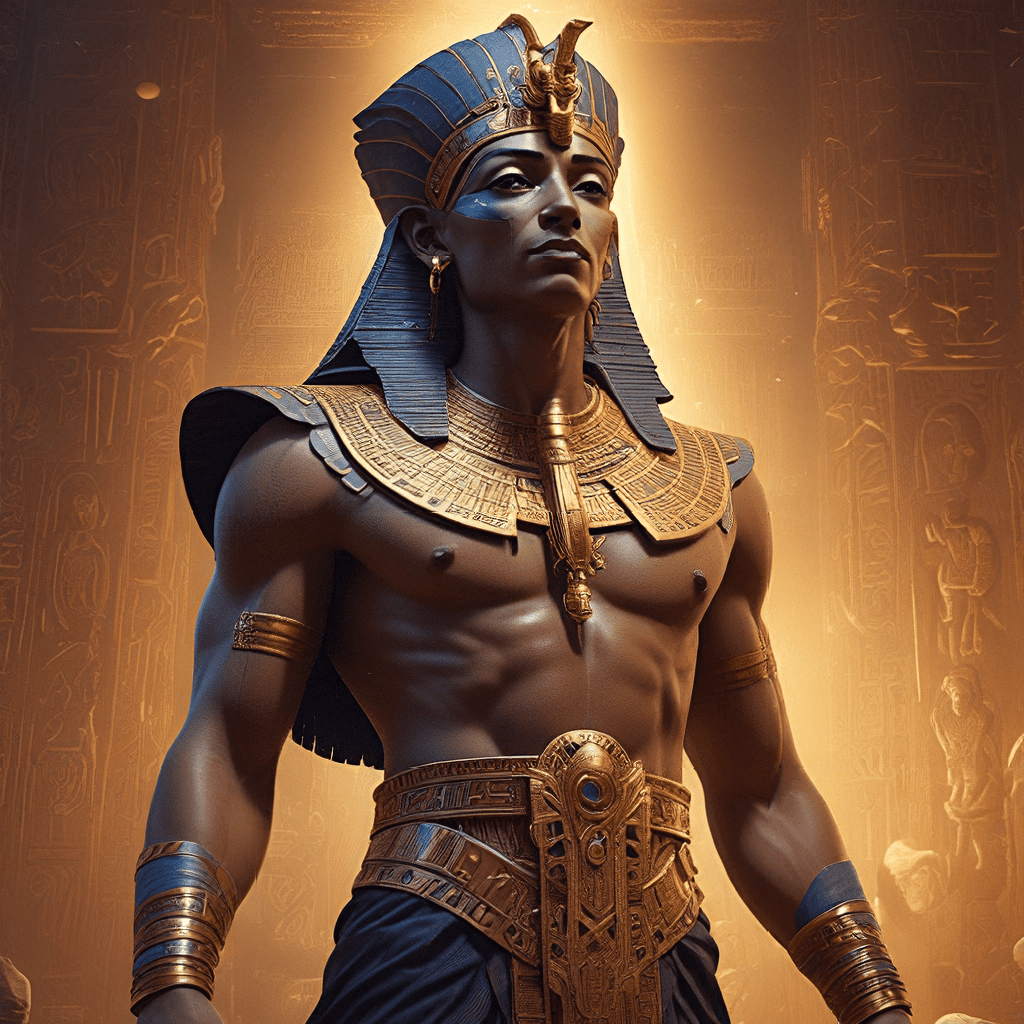1. The Divine Craftsman: Ptah’s Role in Creation
Ptah, a prominent deity in ancient Egyptian mythology, wasn’t the god of the underworld, as some may believe. Instead, he held the esteemed title of the “Divine Craftsman,” playing a crucial role in creation. In the Egyptian pantheon, Ptah held a significant position as the first god in the Ennead, the group of nine primary deities. His power stemmed from his control over thought and speech, which he used to bring the universe into existence. This concept of “thought” and “speech” was symbolized by the “Heart” and the “Tongue,” representing the power of creation through intention and communication.
Ptah’s creative power extended beyond mere thought, encompassing the physical shaping of the world. He was regarded as the architect and sculptor of the universe, responsible for crafting the cosmos and its inhabitants. Ptah’s role in creation was often depicted in Egyptian art, where he was shown holding tools like a potter’s wheel, representing his ability to mold and shape the world. He was also recognized as the patron of the arts and crafts, inspiring artists and artisans to emulate his skill and creativity.
2. Memphite God: Ptah as Patron of Memphis
Ptah’s association with the city of Memphis, located in Lower Egypt, was so strong that he became known as the “Memphite God.” Memphis was considered the first capital of ancient Egypt, and it’s believed that Ptah’s worship began in this city. The city’s prominence, both politically and religiously, solidified Ptah’s importance in Egyptian culture.
The Great Pyramid of Memphis, a testamen to the pharaohs’ power, was believed to be built under Ptah’s guidance. Its construction was seen as a manifestation of Ptah’s creative energy and his influence over the pharaohs, who were considered his earthly representatives. The pharaohs, in turn, revered Ptah as their divine patron and sought his blessings for their rule.
Within Memphis, the Temple of Ptah stood as a majestic center of worship and religious activity. It housed numerous priests who dedicated their lives to serving Ptah and upholding his rituals. The temple was a place where people from all walks of life came to seek Ptah’s favor, pray for guidance, and offer sacrifices to honor the god of creation.
3. The Divine Architect: Ptah’s Influence on the Arts
Beyond his role in cosmic creation, Ptah was known as the patron of artisans and craftspeople. His mastery over creation extended to the skills of blacksmiths, metalworkers, sculptors, and other skilled individuals. Ptah’s connection to tools and technology was deeply ingrained in Egyptian culture, and he was often depicted holding a scepter and an ankh, symbolic of his power and life-giving force.
As the god of metalworking, Ptah was believed to have bestowed upon humans the knowledge and skills necessary to work with metals. This connection to metalworking was a testament to Ptah’s ability to transform raw materials into objects of beauty and utility. His influence extended to various fields, including architecture, engineering, and the creation of jewelry, ornaments, and weapons.
Ptah’s image was often portrayed in Egyptian art as a bearded god, symbolizing wisdom and authority. Sometimes he was depicted wearing a white crown, representing Upper Egypt, and a red crown, symbolizing Lower Egypt, signifying his dominion over the entire land.
4. Ptah’s Consort: Sekhmet, the Lion Goddess
Ptah’s divine consort was Sekhmet, the fierce lion goddess known for her protective power. This powerful couple represented the dual forces of creation and destruction, necessary elements in maintaining balance in the cosmos. While Ptah was responsible for bringing life into existence, Sekhmet, the “Great Lioness,” was seen as the protector, defending against chaos and evil.
Sekhmet’s role as protector was especially important in times of conflict, illness, and natural disasters. She was feared and revered as a force of nature, capable of unleashing her wrath upon those who threatened the balance of the world. Despite her fearsome reputation, Sekhmet was also seen as a symbol of strength and power, and her protection was sought by the pharaohs and the people alike.
The duo of Ptah and Sekhmet represented a harmonious balance between creation and destruction, a cornerstone of ancient Egyptian beliefs. Together, they embodied the cyclical nature of life and death, showcasing the interconnectedness of all things in the universe.
5. Ptah’s Sacred Animal: The Apis Bull
The Apis Bull, a black bull with specific markings, held a special status as the embodiment of Ptah on Earth. The Apis Bull was believed to be the manifestation of Ptah’s spirit, and its presence was seen as a sign of good fortune and divine favor.
The significance of the Apis Bull in Egyptian culture was immense. Its birth was celebrated with great fanfare, and the bull was treated with reverence and respect. A special temple was built to house the Apis Bull, and priests dedicated their lives to caring for it. The bull’s death was considered a great loss, and its body was mummified and buried with elaborate ceremonies.
The Apis Bull’s presence was a powerful symbol of Ptah’s influence in the world. It served as a reminder of the god’s creative power and his connection to earthly affairs. The bull’s veneration was also a testament to the Egyptians’ belief in animal symbolism and the interconnectedness of the divine and the earthly realms.




